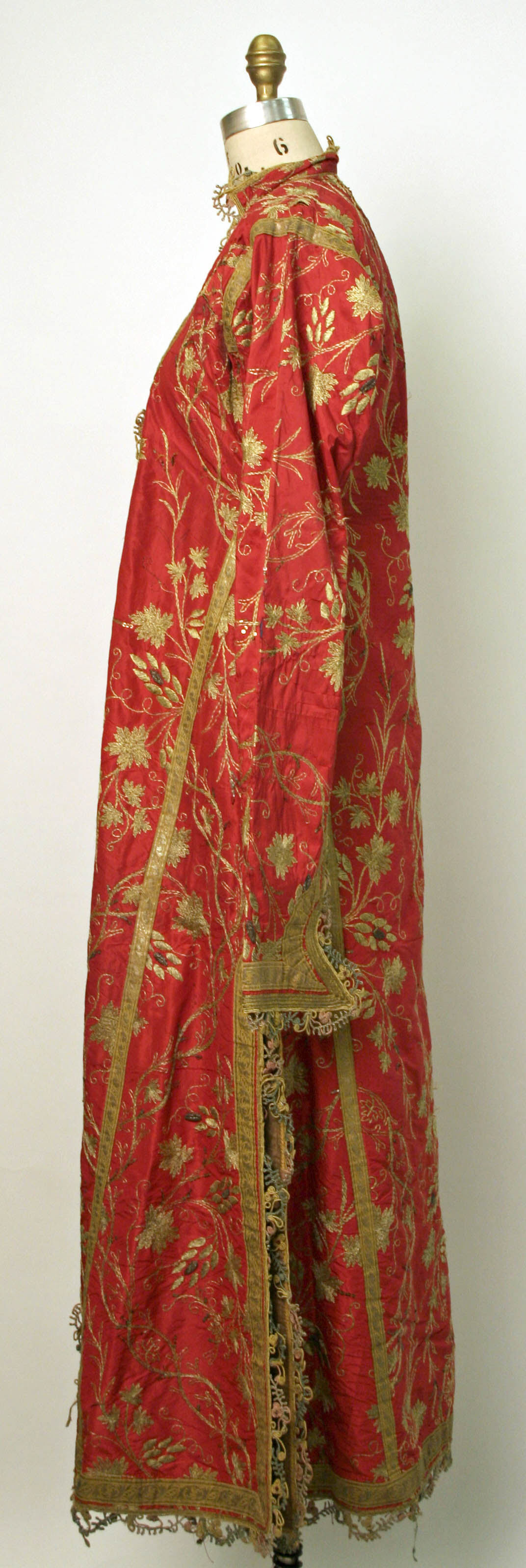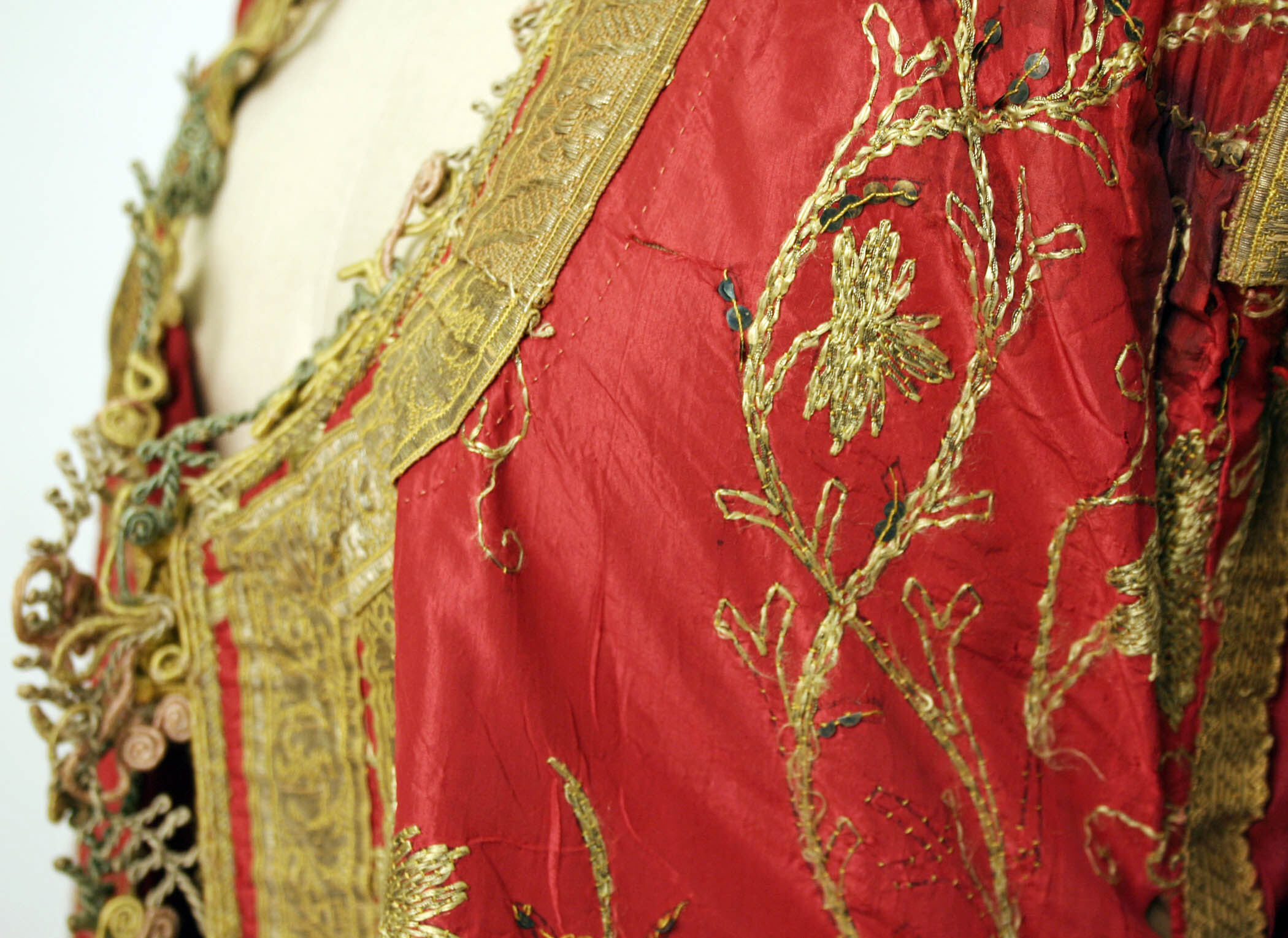Uçetek Entari or Three-Skirt Robe
Not on view
This üçetek entari or three-skirt robe with low neckline and long sleeves with elaborately decorated ends is characteristic of an Ottoman woman’s fashionable outfit of the later nineteenth century, worn by women of middle and upper classes on special occasions. The sleeves of this robe are only seamed from the underarm to the elbow, from where they would hang and reveal the blue silk embroidered lining in blue silk with floral embroidery, creating a colorful contrast with the red of the main fabric. Typical for entaris, the front is open, revealing parts of the soft salmon-red silk lining. The entari was later relined with a bordeaux red silk. The undershirt or gömlek that would have been worn underneath would only be partly visible along the arms and the neckline. A belt with decorative girdle clasp or a fine sash would hold the entari together at the waist. While the overall shape compares with examples worn in Istanbul and other parts of Anatolia, this robe presents features common for the Balkan tradition. These are defined by long sleeves ending in shaped cuffs, a deep U-shaped neckline, extensive use of passementerie trim bands made with metal thread applied to mark the sections of the skirt part, the robe’s edges or the arms of the robe, and a fitted waist with a widening of the skirt. In line with women’s taste of the Balkan communities, the fabric of this entari presents a glittery effect and makes extensive use of metallic threads in the overall embroidered patterning. For example, a special rectangular wrapped metallic cord was applied to the relief accents on individual grapes seen in the pattern.
Due to rights restrictions, this image cannot be enlarged, viewed at full screen, or downloaded.
This artwork is meant to be viewed from right to left. Scroll left to view more.




